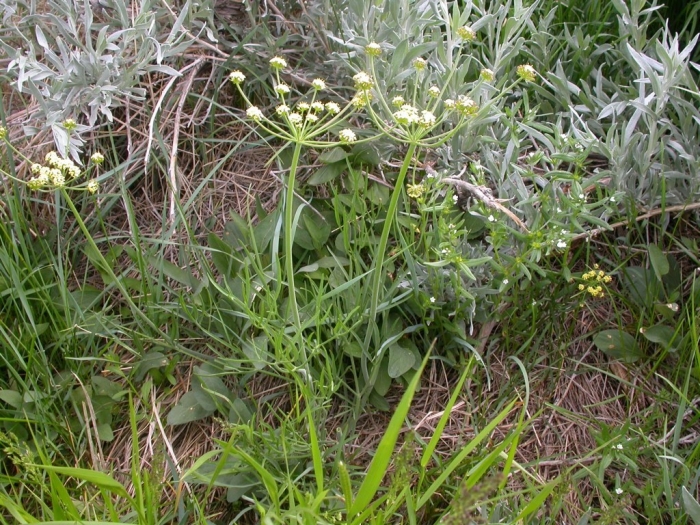Nineleaf Biscuitroot
(Lomatium triternatum)
Nineleaf Biscuitroot (Lomatium triternatum)
/
/

Matt Lavin
CC BY 4.0
























Estimated Native Range
Summary
Nineleaf biscuitroot is valued for its drought tolerance and its ability to thrive in poor, rocky soils, making it a suitable choice for xeriscaping and naturalistic plantings. It is also used in restoration projects to stabilize soils and promote biodiversity. In cultivation, it requires minimal water once established, prefers full sun to part shade, and well-drained soils. There are no major disease or pest issues associated with this plant, but it is not commonly found in the horticultural trade. Historically, the roots of Lomatium species were used by indigenous peoples as a food source and for medicinal purposes.CC BY-SA 4.0
Plant Description
- Plant Type: Herb
- Height: 2.2-3.25 feet
- Width: 0.75-1.5 feet
- Growth Rate: Moderate
- Flower Color: Yellow
- Flowering Season: Spring
- Leaf Retention: Deciduous
Growth Requirements
- Sun: Full Sun, Part Shade
- Water: Medium
- Drainage: Fast, Medium
Common Uses
Drought Tolerant, Edible*Disclaimer: Easyscape's listed plant edibility is for informational use. Always verify the safety and proper identification of any plant before consumption., Low Maintenance
Natural Habitat
Open woodlands, grasslands, and sagebrush deserts in western North America
Other Names
Common Names: Salt and Pepper, Ternate Lomatium, Nine-Leaved Desert-Parsley, Nine-Leaved Biscuitroot, Nine-Leaved Lomatium, Ternate Desert-Parsley, Parsley Desert
Scientific Names: , Lomatium triternatum, Cogswellia latifolia, Cogswellia platyphylla, Cogswellia robustior, Cogswellia triternata, Cogswellia triternata f. lancifolia, Cogswellia triternata var. robustior, Eulophus triternatus, Ferula nuttallii
GBIF Accepted Name: